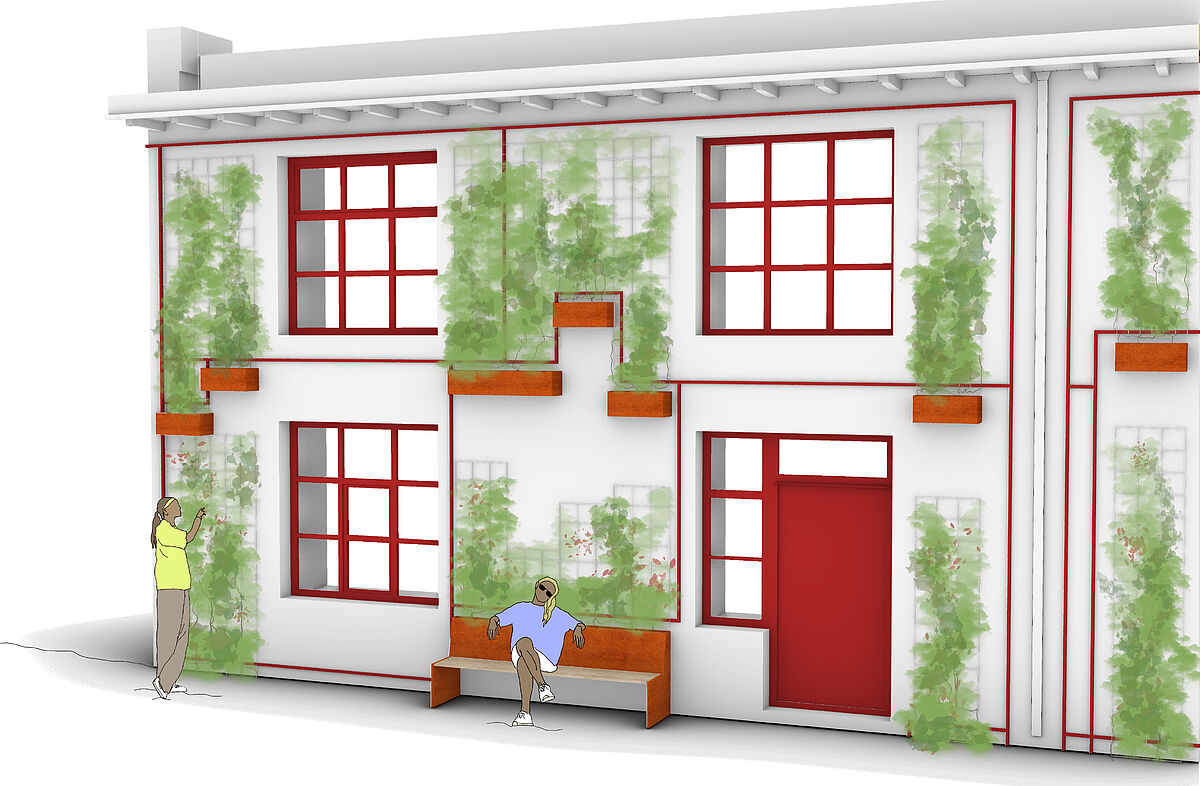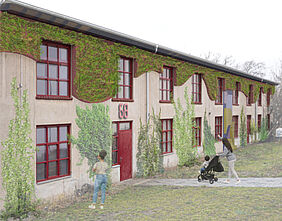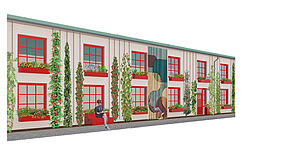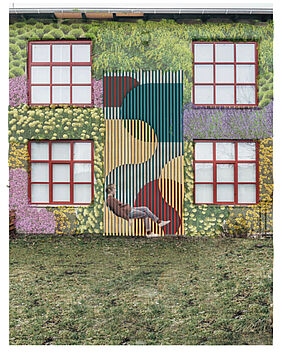Background | Weather extremes such as heavy rainfall, extreme summer temperatures or dry spells are on the increase and are a particular burden on cities and their inhabitants. Greening buildings – especially the greening of roofs and facades – makes it possible to accommodate greenery where there is no more space at ground level because of the buildings. Green façades can reduce the heat-storing effect of a building in summer and also restore existing space for rainwater retention. This has a demonstrably positive influence on the microclimate, the quality of living and the quality of stay. In addition, the green building surface has a positive effect on flora and fauna, air quality and sound reflection. Especially in densely built-up neighborhoods, the greening of buildings not only serves the ecology, but also the health protection of the citizens. The sight of greenery reduces stress levels and has a positive influence on attention and concentration, both in adults and in children and young people.
After intensive theoretical discussion, six design ideas were developed in pairs and individually, which follow very different approaches:
Opposites attract
More green for GEH8
Pauline Jünemann and Jasmin Schnell, BA IA
The construction relies on the new and experimental material Butong as a wall-bound system and classic wire ropes as a ground-bound system. In this way, the plants grow towards each other, connecting the green roof with the garden, and opposites attract.
GEH 8 GOES GREEN
Camilla Wilke, BA A
The edible ground-based planting is combined with non-edible plants that are allowed to grow in front-mounted Corten steel boxes. The trellis system consists of a stainless steel grid in front, the irrigation is done via a red pipe system in front and picks up the color of the window frames.
Camilla received an honourable mention for her design.
GEH 8 – An edible splendor
Katja Beier and Anna Schopmans, BA IA
A façade planted with exclusively edible and insect-friendly plants. The red of the building is picked up by plant boxes made of 4mm red flat steel aluminum. The rest of the greenery is ground-based and vertical between the window elements. The construction is made of larch wood slats, similar to the insect hotel. Micro-irrigation with the clay body system and the stored water from the cistern will ensure that the plants are always ready for consumption. In addition, there is an integrated seating area, which creates a place to enjoy the peace and quiet and the delicacies.
No one has the intention to GREEN a wall....
... We make it puffy and colorful!
Maren Britz and Lorena Krohn, BA A
The aim of the design is to create a lively façade that takes up the intense colors and organic shapes of the insect hotel. Many small colorful plant patches attract the viewer's attention, while green tones dominate on the outside. The variety of surface structures and heights bring movement to the façade. Strongly flowering flowers and perennials are placed in the area of the insect hotel. The construction consists of many small composite plant pockets filled with granulate.
COVERED & GREENED UP
Lucia Loriga and Janne Schult, BA A
The concept picks up on the GEH 8 creative mix by using interlocking blobs in 3 colors on a green background as well as neon lettering, thereby linking up with the design of the insect hotel. The modules are planted "pixel by pixel" in the 4 colors. The plants stand out from each other in terms of leaf, flower and fruit shape and color, so that the image is visible all year round. Edible plants (berries, herbs & salads) grow at the bottom, while ground covers, grasses & mosses grow at the top. In this way, the image changes throughout the year, as do the activities and actors in GEH 8.
Façade GREENing for GEH 8
Rayna Rothe, BA IA
F focus is on playing with shapes and shades of green: mountain sedge, ribbed fern, globe moss, star moss and succulents playfully run across the façade in curved shapes.






